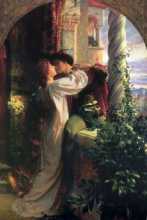In the supplementary texts of the Torah called Ketuvim, "Writings", there is a standout scroll called Shir Ha'Shirim, The Song of Songs. It is poem, likely meant to be set to music, that seems a bit odd among all the other clearly religious documents of the Bible. It is not a psalm or the story of any named figures doing something related to Judaism or the kingdom of Israel. Instead, it is a simple love story from the perspective of two common people. Many scholars have attempted to explain its inclusion in the Torah by reading it as an allegory for the sacred bond between God and Israel. It may very well be such a metaphorical piece, but the explanation may be a bit simpler than that.
Before getting into the actual content of The Song of Songs, it's important to understand its history and its structure. The poem has been linguistically dated to 9th century BCE North Kingdom, Israel. It is clearly the product of a writer who was worldly and educated. It not only shows an adeptness with the high literary fashions of the time, such as alliteration and long, complex lines, but it also uses a number of foreign "loan" words. This formatting and style differs greatly from the purely religious texts of the Torah, which are written in straight Toritic Hebrew. The Song of Songs was incredibly popular in its own time and long after. It would have been seen as a great cultural accomplishment for the Hebrew people, a poem that compared favorably to the highly respected Persian verse of the era. This would have been incentive enough to include it in the Torah, the great cultural compendium of Jewish civilization.
The Song of Songs has often been mistakenly attributed to King Solomon, mostly because of the ambiguous phrasing of the full title, Shir Ha'Shirim Asher L'Shlomo, which can translate as "The Song of Songs Which is Solomon's" but could just as easily translate as "The Song of Songs Which is For Solomon". Given that the poem is written in the Northern Israel dialect while Solomon himself was a native ruler from Judah in the south, it makes more sense as a gift or possibly as a critical message to Solomon from someone else.
The format of this poem is somewhat difficult in direct translation. There are two speakers in The Song, one male and one female. They trade lines in no set pattern. Sometimes the man takes one line then the woman takes the next three, while sometimes they alternate evenly. In the Hebrew it's very clear who's speaking, both because Hebrew conjugates verbs and assigns nouns based on gender and because the two lovers refer to one another with two unique designations. The woman refers to the man she loves as Dodi, "My Beloved", while the man refers to the woman he loves as Ra'yati, "My Companion". This naming convention is consistent throughout the poem but it is not a larger linguistic convention. Neither of those pet names are gender specific. Following along with both the Hebrew and English, it is considerably easier to understand what's going on in a given passage with these two words, Dodi and Ra'yati, in mind.
Later we will dive into the story of The Song of Songs by each of its chapters, eight in all. We will be looking at both the secular and religious interpretations of this unique work of scripture.
